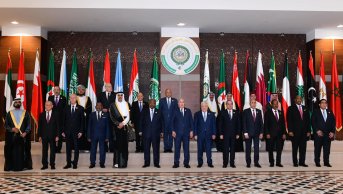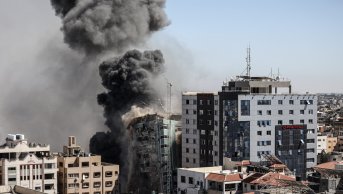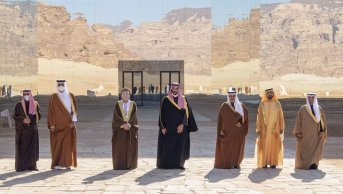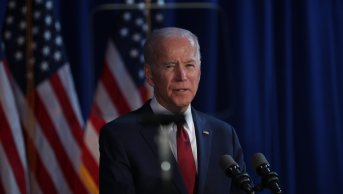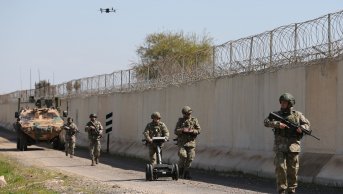The Middle East in Trump’s National Security Strategy (NSS)
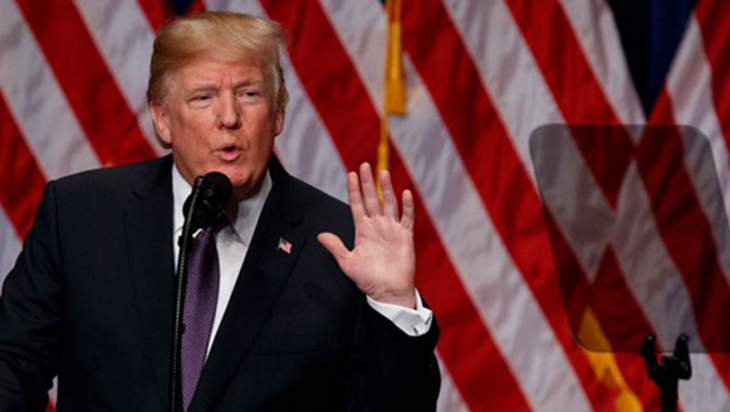
The USA governments periodically publish a national security strategy to outline major security concerns and their strategy to deal with them. However, every US administration reconstructs its national security strategy based on its political perspective, priorities and preferences. The Trump administration has recently published a document that sets forth the four pillars of American national security: (a) protecting US culture, people & homeland, (b) promoting prosperity, (c) promoting peace through strength, and (d) advancing US interests/values. While these goals can be seen as general policies of the US establishment, their wording and details carry clues to Trump’s America First approach. This articles aims to analyze the Trump’s national security strategy vis-a-vis the Middle East.
Similar to Obama’s Asia pivot, Trump promised to reduce America’s role in the Middle East during the elections campaign. He even mentioned the possibility of leaving Syria to Russia. Nonetheless, the outlook changed after he came to power as he maintained Obama’s policies in Iraq and Syria. He approached to Saudi Arabia and United Arab Emirates and Egypt more than Obama did. Unlike its predecessors, Trump made his first visit to an Arab country, Saudi Arabia as the birthplace of Islam, instead of Israel without any indication of abandoning its Islamophobic views. On the other hand, this unusual practice neither bothered the US establishment nor Israel, signaling the arrival of major developments in the Middle East. During his visit to Saudi Arabia the president Trump attended several summits with Gulf, Arab and Islamic countries. Being upset with Obama’s nuclear deal with Iran and its relative indifference toward the conflicts in Syria and Yemen, the Gulf countries were welcomed the Trump return to the region with huge trade deals.
Trump’s National Security Strategy carries many references to the Middle East as it expressed four main policies regarding the region. The first pillar that aims to protect American culture and homeland implies to insulate it from Islamic influences as it reminds Trump’s Islamophic and anti-immigrant statements before the elections. Nonetheless, this theme did not disappear in his discourse and action while losing intensity during his first year in office. Trump’s visa ban on Muslim countries is also related to limiting the Muslim influence in the USA. Among the six countries that suffered from visa ban are all Muslim countries as he believes it will protect the US borders and culture. Similarly, what the NSS said about pursuing threats to their source reminds the Bush’s war on terror that led to the invasion of Afghanistan and Iraq, opening Pandora’s Box in the Middle East.
The second pillar of promoting American prosperity implies that, unlike what is stated, the US government will sustain the conflicts in the Middle East and take side with the Gulf Arabs against Iran to promote its defense sector as a driving force of US economy and to finance its budget deficit. America’s dominance on world energy reserves and its distribution will also maintain its interest on the Gulf countries that export oil and gas. The Middle East conflicts can weaken the Gulf countries’ financial situation and increase their dependence on the US. Trump’s third strategy or promoting peace through strength envisages the US superiority in the fields of military, defense industry, space, cyberspace and intelligence. Considering the hectic developments and the continuing US interest in the Middle East, it is obvious that the Trump administration and its allies will maintain ethnic and sectarian tensions to curb democratic aspirations and Iranian influence in the Middle East. In brief, we can expect more conflicts in the region during the Trump era.
Trump’s fourth strategy of advancing American influence also involves the Middle East region. The text openly suggests that U.S. development assistance will bolster “America’s national interests.” In parallel, America’s traditionally strong relations with authoritarian regimes will not be considered a problem as long as they continue to serve the US interests. The goal of defeating “jihadist terrorists and other groups that foment hatred and use violence to advance their supremacist Islamist ideologies” will also entail more American intervention in the Muslim world and can be used as a pretext of Islamophobic policies for the region. The goal to promote American values will be extended to the Arab World, especially to strengthen the Americanization of the Gulf Arab culture.
The document also outline five major problems about the region: (a) Iranian expansion, (b) state collapse, (c) jihadist ideology, (d) socio-economic stagnation, and (e) regional rivalries. It says a realistic approach is needed for these problems as democratic aspirations and disengagement will not protect the US from the region’s problems by backing down from Trump’s isolationist promises prior to the elections. The text specified Trump policy goals specific to Middle East: (a) fighting jihadist terrorism in the region, (b) curtailing the power of countries hostile to the USA, (c) envisages a Middle East that “contributes to a stable global energy market.” These are not different from traditional American priorities in the region but their interpretation is.
Trump’s Middle East strategy that focuses on jihadist terrorism and the Iranian influence as two main threats described “Iran, the world’s leading state sponsor of terrorism”. It displays a clear uneasiness about Iran’s rising influence with its partners, proxies, weapons, and funding in the region along with its intelligence capabilities and cyber activities, nuclear deal and ballistic missiles. Iran has been seen a problem in the US foreign policy since the arrival of Islamic Revolution in 1979 and did not change since then. Obama also viewed Iran as a problem in 2010 but chose to engage it as a strategy with Nuclear deal.
The Trump administration opposed the Nuclear deal in line with Israel and Saudi Arabia. Trump’s rise to power and his pro-Israel approach set off a new dynamics in the Gulf region. He promised the Gulf countries to help them against Iran and encouraged them to align with Israel. This approach facilitated the emergence of a new set of developments in the Gulf, from the rise of the Saudi Prince Mohammed bin Salman to power to the siege on Qatar. Trump’s security document frequently praised the Saudi reform efforts to reject radical ideologies without naming the country or its leadership but a clear sign of his support to the new leadership in the oil country.
As an evidence of the superficial reading of the scene, the NSS document seems to reduce the cause of political instability and economic problems to the sectarian grievances. It is well possible to argue the opposite: The sectarian violence is the source of misery in Yemen, Syria and somewhat in Iraq. The text emphasizes the US need for strengthening a long-term strategic partnership with Iraq as an independent state. Iraq seems to constitute a critical place in the US regional calculations: Curtailing the Iranian influence and maintaining energy security as well as continuing sectarian and ethnic relations that justify the US intervention in the country.
The Trump’s NSS only pays a lip service to the Israeli-Palestinan peace project: "a comprehensive peace agreement that is acceptable to both Israelis and Palestinians" (p.49). In fact, it clearly displays a pro-Israeli outlook with its self-assuring declaration that Israel is not the cause of the region's problems. It observes that many countries "increasingly found common interests with Israel in confronting common threats" (read Iran) (p.49). Trump also encourages cooperation between Arab countries and Israel, which is already at place in the Gulf. Disguising his Islamophobic discourse, the document promises economic prosperity for those who seek economic and political cooperation with the US in a wider context.
Trump policies deviated from traditional US policies of two-state solution in the Arab-Israeli conflict. During his early days Trump presented a blank check to Israel by saying that he does not mind one-state or two state solutions. This policy became more obvious when he announced that they will unilaterally transfer the US embassy to Jerusalem on January 6, 2017. It created a global uproar that rejected the decision at the UN General Assembly in an unprecedented way. Despite the unfeasibility of decision, Trump administration will continue its strong pro-Israeli policies, shaping the regional dynamics accordingly.
The NSS states that "the United States can promote stability and a balance of power that favors U.S. interests." The Obama administration’s ‘train and equip program’ in Syria continuously shifted the balance among the warring groups until it decided on the SDF whose backbone is constituted by PKK, PYD, YPG. The US both dragged the Syrian conflict on and eventually failed the democratic aspirations of the Syrian people. Without mentioning democracy in the Middle East, the Trump administration seems to be eager to support PKK related groups in Syria, opening the way to the possibility of dividing Syria, contrary to the official statements.
The Gulf region constitutes an important place in Trump NSS whose top priority is stopping Iran. The document mentions Iran seventeen times while mentioning its ally Israel only four times. It describes Iran as “the world’s leading state sponsor of terrorism” by blaming it for supporting terrorism, expanding “its influence through partners and proxies, weapon proliferation, and funding” in the Middle East. Trump also vehemently opposed the Nuclear deal by emphasizing on the necessity of working with partners to prevent Iran from obtaining a nuclear weapon and neutralize Iranian influence.
It is obvious that Trump needs the Gulf Arabs to counter the Iranian influence or he needs to scare them with Iran in order to bring them closer to Israel. The NSS reaffirms the necessity of Gulf Cooperation Council that is on the verge of collapse after the Saudi-led blockade on Qatar. Trump personally supported the blockade at the beginning but he then remained to be silent after all world powers and the US establishment resisted the campaign. Nonetheless, the Trump administration will not act to end the Qatar crisis as the US benefits from the concessions from both sides, in line with the previous principle of tipping the balance of power in favor of the USA.
The document mentions the major Syrian crisis in a passer-by style: "We will seek a settlement to the Syrian civil war that sets the conditions for refugees to return home and rebuild their lives in safe." It lacks a clear strategy how to end this major problem that became more complicated recently with the negotiations of Astana and Sochi. While Trump wish that the refugees return to their homes but he fails to provide any strategy to realize that goal. During the recent years we noticed a great amount of US investment in PYD and other marginal groups in Syria even after the ISIS is defeated. Such narrow-focus will potentially aggravate ethnic tensions and will destabilize Syria, Iraq and even Turkey.
To conclude, the 2017 national security strategy of the Trump administration lacks a clear vision about the peaceful Middle East and a coherent strategy to deal with its problems. Unexpectedly from the America First approach of Trump, the NSS demands more US involvement in the Middle East under the pretext of fighting terrorism and radicalism, stopping Iranian influence. It also gives priority to pro-Israeli policies (and encouraging Arab countries to align with Israel) and fighting terrorism. The NSS envisions Arab reforms only vis-à-vis fighting radical ideology while ignoring the democratic transition in the Arab world as a factor of moderation and stability. Overall, Trump’s NSS lacks a real diagnosis on the problems of the Middle East and a clear vision of how to solve them.

